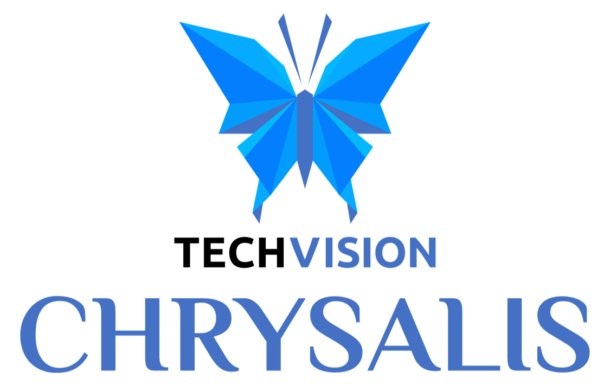
Gary Zimmerman, CMO and Principal Consulting Analyst
In a career spanning 25+ years, Gary has launched six companies, twenty-plus products, built high-performance marketing and technology organizations, and generated hundreds of millions in sales. Various disciplines he’s used to accomplish these results include digital marketing, program/project management, strategy development and execution, and lean startup and other innovation techniques.
show more
Gary has experience in telecommunications and IT management in both the carrier and enterprise setting. Gary spent twenty years at AT&T where he developed ordering, billing, and international clearinghouse systems. Gary has successfully launched and managed products including international information services for global 500 companies, a software-as-a-service offering in Japan, and data networking / security offerings for the mid-market. Prior to joining TechVision, Gary was the Head of Marketing for the Carrier Services business unit of Neustar, a billion dollar provider of real-time information services.
At TechVision Research, Gary is focusing on the following areas of specialty
- Innovation Management
- Marketing and Communications
- Enterprise Architecture
- Blockchain
show less
Expertise:
- Innovation Management
- Marketing and Communications
- Enterprise Architecture
- Blockchain
Workshops:
- Innovation Reference Architecture
- Blockchain Strategy
- Distributed Identity
Recently Published Research
Blockchain 101; An Executive Introduction to Distributed Ledger Technology
This report introduces blockchain for enterprise executives and IT leaders. It covers the basics, benefits, roadblocks, patterns, and an action plan for adoption.
Applying Start-up Concepts to Enterprise Innovation
Established companies struggle to innovate due to built-in barriers, while emerging technologies fuel innovation. This report explores the need for an “entrepreneurial-like” model in large enterprises and covers four aspects of innovation: mindset, focus, risk management, and financing. TechVision offers specific recommendations for IT and business leaders to leverage entrepreneurial skills for sustainable innovation.
Innovation Reference Architecture
This report provides a model for systematizing innovation, introducing a reference architecture to help organizations organize and manage a continuous innovation process. It covers strategy, methods, people, and execution guidance.
Developing an Enterprise Blockchain Strategy
This report addresses the hype and confusion surrounding blockchain technology, exploring its potential as a core enabling technology and providing recommendations for enterprise clients on developing strategies and appropriate investment levels.
The Evolution of the Blockchain Consensus Protocol
Enterprises are increasingly adopting blockchain technology, but not all distributed ledgers are equal. The consensus mechanism used to verify transactions varies and can have drawbacks. This report explores different approaches and their strengths and weaknesses.
Decentralized Identity and Verifiable Credentials
This report examines the emerging field of Decentralized Identity, analyzing why it’s still in its early stages and how enterprises can adopt it in their strategies, with a focus on verifiable credentials and the Trust over IP model. The report provides recommendations and covers key vendors and activities.
Digital Trust
Trust is essential for efficient markets and the success of digital businesses. In the digital age, trust is reinforced through platforms that demonstrate integrity, competence, benevolence, and predictability. This report explores the dimensions of digital trust and how enterprises can deliver on their promises to customers and prospects.
Decentralized, Blockchain-Enabled Identity Services Gain Traction
The Internet’s trust problem presents a challenge for enterprises that allocate business risk based on identity attributes. A new model, based on Decentralized Identity and verifiable credentials, shows promise as a scalable, peer-to-peer trust solution. Enterprises are advised to get acquainted with the technology and prepare for this new trust model.
Innovation Execution
The pandemic accelerated trends towards adaptive enterprises, requiring innovation and effective innovation management. This report provides tools and techniques to execute innovation programs in support of business and innovation strategy.
Innovation Governance
The COVID-19 pandemic has created disruptive opportunities and new risks, requiring companies to redefine their relationships with customers and shift their innovation capabilities and governance to adapt to the next normal. This report provides a framework for innovation governance, covering building an innovation vision and strategy, developing core capabilities, driving execution, and promoting innovation.
Web3 Executive Level Set
The World Wide Web’s 2nd generation, Web2, is dominated by companies like Google and Facebook, but trends indicate a shift towards the Metaverse and Web3 movements. This executive-level report provides an overview of Web3’s blockchain and tokenization-based peer-to-peer data layer and the opportunities and barriers it presents for enterprises.
An Operating Model for the Digital Enterprise
TechVision has released a report on the various components and organizational models that make up a successful digital enterprise, covering topics such as organizational structure, digital governance, decision rights, people model framework, business partnerships, and location footprint. The report provides insights and guidance for organizations looking to improve their digital performance.
Upcoming Research
Generative AI Level Set
The emergence of Generative Artificial Intelligence (GAI) technology has transformed the enterprise landscape in recent years. GAI systems use complex algorithms and deep learning techniques to generate new data, designs, and even whole products. This innovative approach has the potential to revolutionize various industries, including finance, healthcare, and manufacturing. The adoption of GAI in the enterprise can offer several benefits, such as improving efficiency, reducing costs, and enhancing customer experience. However, this new technology also presents challenges, including privacy and security concerns, ethical considerations, and technical limitations. This paper provides an overview of the use of GAI in the enterprise, its potential applications, benefits, challenges, and future trends. It also offers recommendations for enterprise leaders on how to successfully integrate GAI into their operations while minimizing risks and maximizing benefits.
Supporting Methods and Procedures for Innovation
This report is the latest in our series covering enterprise innovation. It lays out our view of the best ways to utilize generally available tools and techniques to manage your innovation investments and efforts as a total system in support of the business strategy. Even if your enterprise’s innovation focus has been temporarily altered due to covid, the way forward is clear. Organizing and managing innovation as a system is the way forward.
For innovation to be effective, it needs to become a core competency, it has to be supported as any other business activity within the company. It needs to have a defined business process, specific tools and methods, resources, incentives, and training.
This section of the reference architecture addresses the innovation methods and processes that are needed to create and execute innovation projects. These are the focus of this report.
Developing a Trust Architecture
There is a pattern that is forming around how the digital enterprise is evolving and its impact on compliance and risk management. That pattern is decentralization.
Because you have less control and visibility of the people, process, software, and hardware in your digital enterprise, you cannot rely on traditional perimeter prevention. You’ll want to migrate access decisions closer to the resources.
For years security has been built in an outside in perspective. That needs to evolve to inside-out security. The components of an inside-out security model are:
- Information security includes data governance, threat modeling, and data-centric security.
- AI/ML including data-ops, ML-ops, and leveraging the capabilities to monitor and manage the stack.
- Zero Trust including software-defined perimeters, micro-segmentation, and enhanced identity governance.
- Secure software supply chain including security in the code, verified components, a hardened build environment, and security in the delivery.
- Authentic data including deploying blockchains, encryption, identity, and signatures
- Zero identity including decentralized identity, passwordless authentication, and verifiable credentials.
Organizing these pieces into an innovation stack links them into a trust architecture that has the potential to support compliance and risk management in an increasingly decentralized digital enterprise.
This report will outline the different aspects of the trust architecture and how they improve compliance and risk management within the digital enterprise.

© 2019 All Rights Reserved

